Although the Northwest Territories is deep in the grip of winter, there have been several major mining-related developments in the last two months in the areas of new mining legislation and infrastructure.
The Northern Miner sat down with the Northwest Territories Minister of Infrastructure and Industry, Tourism and Investment, Wally Schumann, at the Association of Mineral Exploration’s (AME) annual Roundup convention in Vancouver in January to hear his thoughts on his government’s tabling of a new minerals act, and the latest infrastructure initiatives in the territory.
The Northern Miner: What brings you to the AME Roundup this year?

“Mining has been in the blood of people in the Northwest Territories. it’s what has brought good-paying jobs to a good portion of our residents, and it will continue in the long-term.”
Wally Schumann
Minister of Infrastructure and Industry, Tourism and Investment, Northwest Territories.
Wally Schumann: We attend the Roundup and the Prospectors & Developers Association of Canada convention in Toronto, and these sorts of things to try to get in front of investors and tell the Northwest Territories’ story.
I have been a minister for the last three years now. One of the things that was quite clear early on in getting this portfolio is that a number of people out there in the investment community didn’t realize that devolution was taking place in the Northwest Territories in the last legislative assembly. Those responsibilities for lands and resources have been devolved to the government of the Northwest Territories from the federal government.
And in February 2019, as the Minister, I will be tabling the bill for the new Mineral Resources Act for the government of the Northwest Territories. So, within the next few months, we’re going to have our own made-in-the-North Mineral Resources Act.
TNM: What was it like putting together this legislation?
WS: First of all, we went out and consulted with all the residents in the Northwest Territories.
We do our legislation a little bit differently, probably, than the rest of Canada. We involve everybody from indigenous governments, particularly the ones that signed on to devolution with us. We have an intergovernmental council where we have a number of discussions on all things related to lands and resources.
We do a huge amount of public consultation, probably more than anyone else in Canada. There are ample opportunities to write in, to participate in public forums, to meet directly with the Minister, and to meet with the Premier to have your say around some of these things.
We’ll tabling this for a first and second reading. The committee will be taking that bill out on the road for more public consultation for 120 days, and in the May–June session we will tweak it.
It may be minor tweaks here and there based on feedback we’re going to get, and probably by the end of June we will have our new made-in-the-North piece of legislation.
TNM: How does that change the relationship between the federal government and the Northwest Territories, especially in regards to natural resources?
WS: When devolution took place, that gave all that responsibility over to us. We are not governed by the federal government — it gives us provincial-like powers around legislation, and around land and resources in the Northwest Territories. We’re no different than a province like British Columbia.
Prior to that, we had to operate under federal jurisdiction.
TNM: Devolution in the Northwest Territories has been a multi-year process. What remains to be done?
WS: What’s still in place under the federal government is the regulatory body, the Mackenzie Valley Land and Resource Board. That is still a federal piece of legislation.
But there’s a commitment under the signed devolution agreement between the federal and territorial governments to turn that over to us, and those discussions are ongoing.
At some point, we are going to take that piece of legislation over. I’m almost positive, whoever’s in power at that time, will be tweaking that piece of legislation, as well.

The camp at De Beers and Mountain Province Diamonds’ Gahcho Kué diamond mine, 300 km northeast of Yellowknife, Northwest Territories. Credit: Mountain Province Diamonds.
TNM: In terms of competitiveness, how do you see the Northwest Territories compared with other jurisdictions in Canada?
WS: We’re the premier jurisdiction in Canada, particularly in the North, to invest in. That’s why we’re down here in solidarity to promote the Northwest Territories. What does it take to do business in the Northwest Territories with our indigenous partners and us? Along with the federal government, as they’re a participant in some of this stuff as well.
A lot of people zero in on the investment dollars going to Canada’s three territories, but they’re three jurisdictions experiencing different cycles, with three types of governments and indigenous groups.
The Yukon’s been primarily all gold, and with the Coffee project there’s some uncertainty these days about Newmont taking over the operator Goldcorp.
Nunavut has their challenges, but they also have their advantages. They have one land claimant group — a lot of people don’t understand that — whereas we have seven different groups in the Northwest Territories, with settled and unsettled lands.
There has been an upsurge into the Northwest Territories, particularly around the staking, with some of the new geotechnical work that we’ve been able to produce.
In Vancouver during Roundup, first of all, we’re here to clarify the devolution process and how the regulatory system works in Northwest Territories. That’s why we have our indigenous partners here, to clearly lay out who they need to speak to, depending on which jurisdiction you want to be able to explore in.
Because we have a large territory of 1.3 million sq. km, you can go from the barren lands to the boreal forest, depending on where you want to be. Some of it’s close to hydroelectric power, and some of it’s not close to hydro. There are lots of different things.
And our regulatory process is laid out through the land claimant groups. We need to deal with what land is public lands, what land is their land, what land is available to actually explore.
So we need to educate everybody, and the indigenous partners are here to learn, as well, about some of the challenges that industry has on what they need to improve to be able to attract investment.
TNM: Where do things stand with the Northwest Territories’ tax regime for mineral explorers and miners?
WS: We welcome the federal government’s new commitment on the five-year extension for the flow-through share program. We’re governed through the federal system.
There has been a lot of discussion in the Northwest Territories’ legislative assembly around royalties. Under our new legislation coming forward, we told the assembly that we are not at the point where we want to look at the royalty regime until the next assembly. We wanted to focus clearly on what the Mineral Resources Act legislation was going to be, and how we want to move that forward and work on our piece of legislation in that manner.
We have a number of big pieces that are coming here, because devolution just didn’t give us the mining regulations, it gave us the Petroleum Resources Act, it gave us the Forestry Act, it gave us the Waters Act, the Lands Act. There’s a lot of stuff coming all at once here.
Some of it has been pulled off the table, and held off until the 19th assembly.
We’re working very diligently with all residents of Northwest Territories to create a certainty with the new Northwest Territories-made Act that’s beneficial to move our territory forward.
TNM: Can you tell us about some of the latest infrastructure initiatives, especially road building?
WS: I am also the Infrastructure Minister in charge of all the new dollars coming in for highway construction. We did open up the Inuvik-Tuktoyaktuk Highway — that was a $300-million investment.
The one thing that the ITH has done for residents in Tuk right now — though it doesn’t pertain to mining — is it has increased tourism ten-fold.
That’s a community that never had access before, except by a winter road or airplane.
When we opened that road this year, we had a record number of people that took the ferry to get up there. They had over 5,000 people who drove up there and camped in Tuk in the summer alone, which is a significant amount of people for a little town of 800 people. Now they’re predicting that will probably double, even triple this year.
We just did a tour and I had the opportunity to talk to a lot of business people. The one story that stuck with me is the one grocery store said that their sales went up 300% with the opening of the highway.
As for the proposed Whati road, that will have more impact on mineral development — though we don’t build roads specifically to one project. That’s going be [around a] 100 km road from Yellowknife Highway into Whati.
We were just doing the financial close on the proponent that was the successful bidder on that P3 project, and we anticipate that construction’s going to start within this calendar year.
And within, I would say, 24 months you’re going to see that road completed, and there will be access to the community. That will bring changes no different than Tuk, but that also is going to help open up that whole region of the Northwest Territories for further mineral development.

The airstrip at Nighthawk Gold’s Colomac gold project in the Northwest Territories. Credit: Nighthawk Gold.

Speaking at the Canadian Mining Symposium in London, U.K., in April 2018, from left: Michael J. Byron, president and chief executive officer, Nighthawk Gold; Joseph Campbell, chief executive officer, TerraX Minerals; Ken Armstrong, president, chief executive officer and director, North Arrow Minerals; Robin Goad, president and chief executive officer, Fortune Minerals; Tom Jensen, Deputy Minister, Tourism and Investment, Government of Northwest Territories; and Wally Schumann, Minister of Industry, Tourism and Investment and Minister of Infrastructure, Government of Northwest Territories. Photo by Martina Lang.
There’s a number of people up there, there’s the Fortune Minerals site, there’s Nighthawk Gold at the old Colomac site that they’re pushing very hard on. And there’s a number of other projects up towards Great Bear Lake.
The other one that will change things significantly in the Northwest Territories is that we got $102 million from the federal government for the Mackenzie Valley Highway.
We’re proceeding with the Bear River Bridge, which is the biggest bottleneck on that system right now. There will be a significant amount of money invested there, and we will look at doing a section from Wrigley North, a small test section, to help in training and creating some employment opportunities in the community of Wrigley and the Dehcho Region. And we will proceed with our full environmental assessment with the Mackenzie Valley Highway.
On top of all that, we’ve just did our second-round application with federal Minister Marc Garneau for the National Trades and Corridor Fund for the Slave Geological Province Highway. There was $250 million left in the Northern carveout for that, and we’ve made two submissions. It’s been capped at $50 million per submission on the remaining money, and we did two of them for the Slave Geological Province, which we are heartily pushing for.
There are a lot of green minerals in the Northwest Territories to help drive the green economy — battery minerals and all those technology metals — so we believe that investment, along with the Slave Geological Province, is not just going to help the Northwest Territory, it’s going help drive the Canadian economy.
These are significant investments, and the federal government seems to be listening to our story these days. They are getting the message that this is going to be a good story all the way around, with indigenous participation to help sign off on the Paris Accord and the Pan-Canadian Framework on Climate Change, and drive the economy.
TNM: What’s the status of the ice road to the diamond mines, and the push to build a permanent road?
WS: Within the next few weeks the 300 km ice road to the diamond mines gets built, and it costs $20 million to build it every year, and it melts.
This last year was a record-breaker of 9,500 loads, and this year they told me it’s still going to be around 8,500 to 9,000 loads — that’s how many trucks go there during the winter.
Our goal is to build a road up there and a power system.
TNM: One item you repeatedly emphasize as minister is the pro-mining attitude of the people in the Northwest Territories. Is that sentiment going to continue?
WS: Mining has been around in the Northwest Territories since the 1930s, when they discovered gold in Yellowknife. That’s what has driven our economy for the most part from Giant, to Con, to a number of other small ones. Ptarmigan, we had a number of small gold mines in that whole region. Pine Point zinc was a big part of our economy, and uranium on Great Bear Lake.
Mining has been in the blood of people in the Northwest Territories. It’s what has brought good-paying jobs to a good portion of our residents, and it will continue in the long-term.
We just need to have our federal partners line up with us, and our indigenous governments, which are totally on-side, for the most part, on driving our economy and help drive the Canadian economy.
So that’s what we need to continue to work on, and that’s why we’re at Roundup.
RELATED ARTICLE:
Commentary by Wally Schumann (Jan. 8, 2019): Northwest Territories, a multi-faceted mining destination
RELATED PODCAST:
The Northern Miner Podcast – episode 108: Time for a fresh look at the NWT?

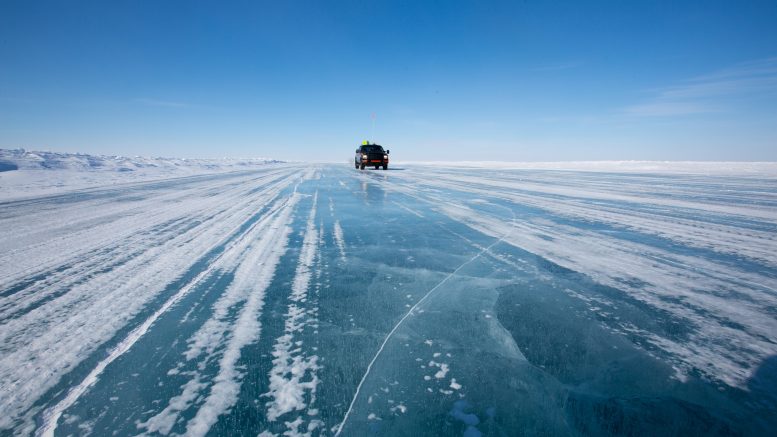
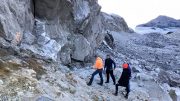
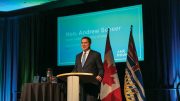
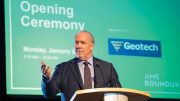
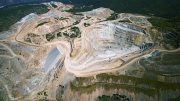
Be the first to comment on "Interview: NWT Minister Schumann on new minerals act, road building"